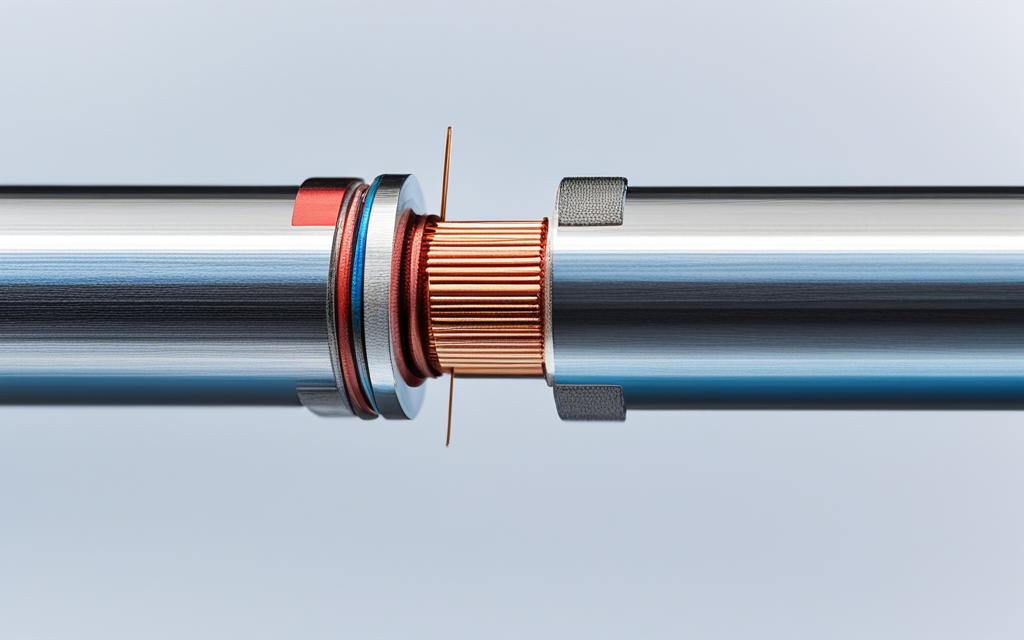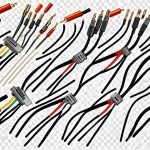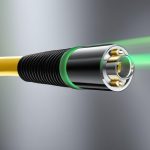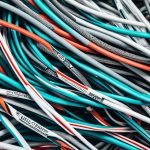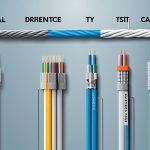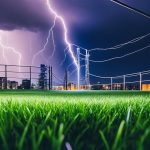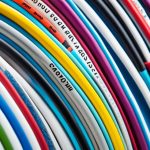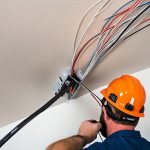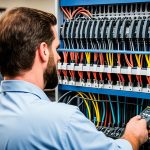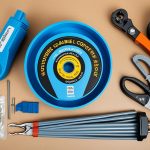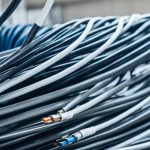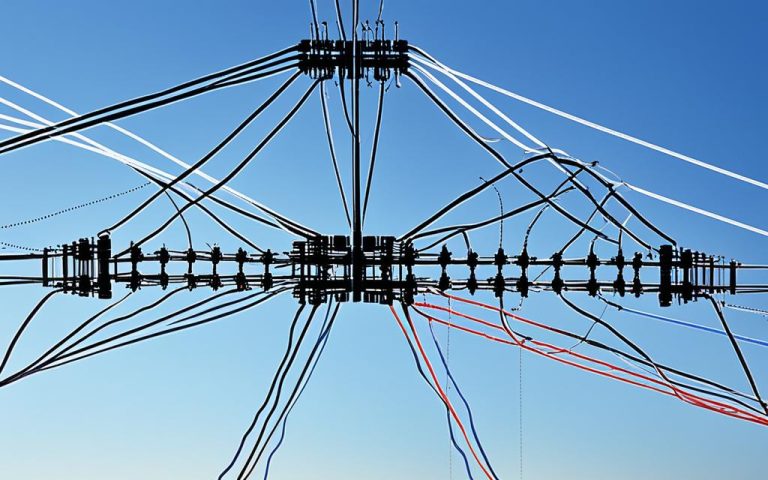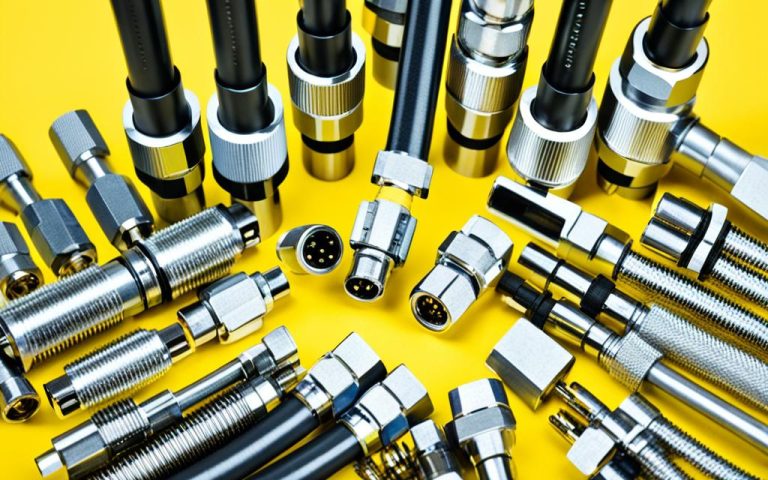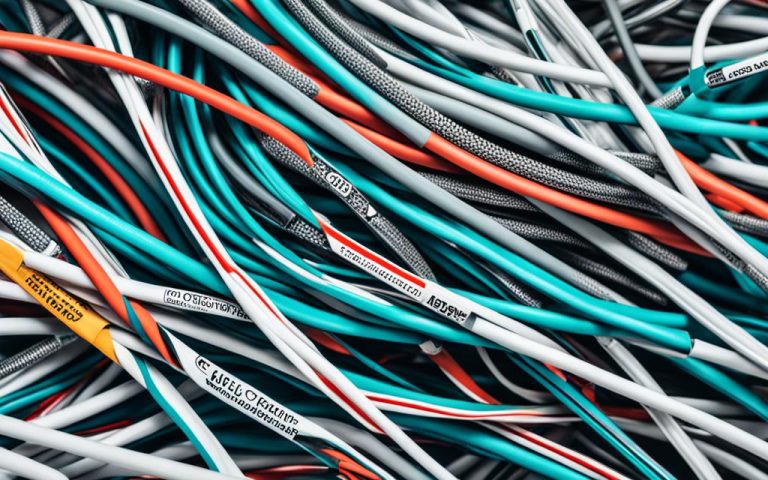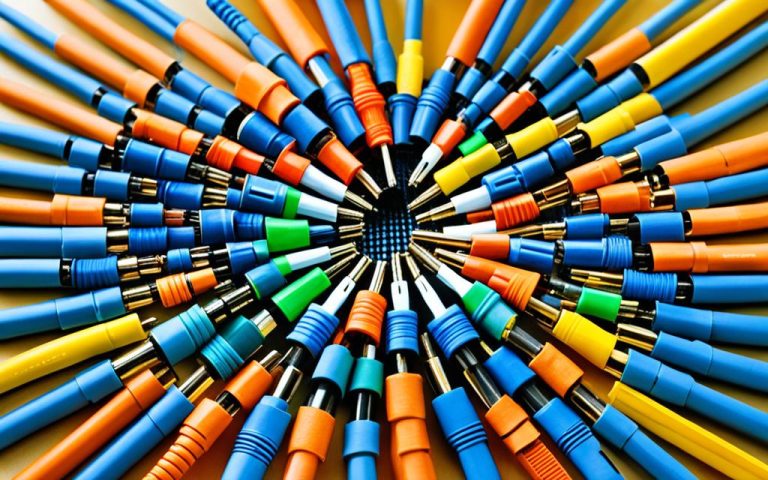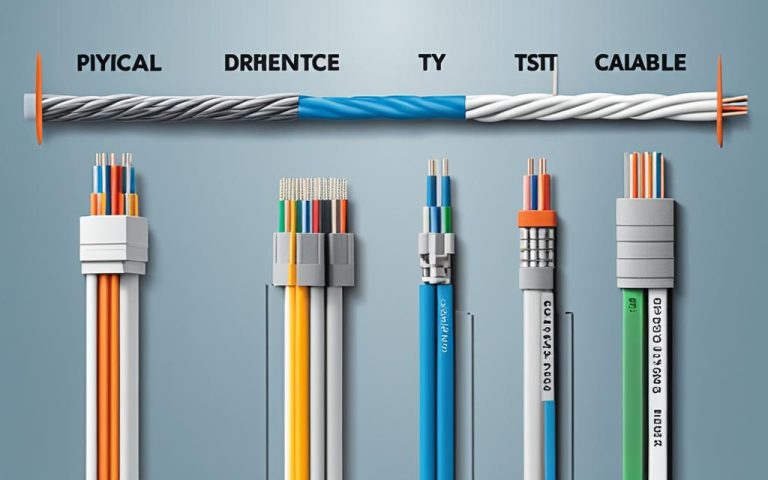Coaxial cable shielding is a crucial aspect of maintaining signal integrity in communication systems. Shielding plays a vital role in combating electromagnetic interference (EMI), which can significantly impact the performance of equipment and degrade signal quality. To ensure reliable and high-quality signal transmission, it is essential to understand the importance of shielding in coaxial cables.
Shielding in coaxial cables serves as a protective layer that reflects and conducts EMI to ground, preventing it from interfering with the inner conductors of the cable. Without proper shielding, external electromagnetic fields can disrupt the transmission of signals, leading to signal degradation and communication issues.
Effective shielding is crucial for maintaining the integrity of communication systems. It helps minimize the impact of external sources of interference, ensuring that the transmitted signals remain clear and reliable. Shielding considerations include the electrical environment, cable dimensions, cost, weight, and flexibility. The right choice of shielding type and quality is essential in achieving optimal performance.
By employing appropriate shielding techniques, communication systems can experience enhanced signal integrity, reduced interference, and improved overall performance. Whether in television broadcasting, internet connections, or data communications, the critical role of coaxial cable shielding cannot be overlooked.
Understanding Coaxial Cable Shielding
Coaxial cables are a fundamental component in various applications, including television broadcasting, internet connections, and data communications. These cables are designed with a specific structure to ensure reliable signal transmission and minimize electromagnetic interference (EMI). Understanding the concept of coaxial cable shielding is crucial to maintaining the integrity of transmitted data.
The construction of a coaxial cable consists of multiple layers, each serving a significant purpose. The cable includes an inner conductor, an insulating layer, a metal shield, and an outer insulating layer. The metal shield plays a critical role in protecting the inner conductor from external sources of electromagnetic interference.
EMI can pose a significant challenge to signal transmission, as it can degrade signals, introduce noise, and compromise overall system performance. Shielding serves as a barrier that prevents unwanted external electromagnetic fields from coupling with the cable’s signal, ensuring the reliable transmission of data.
The shielding of coaxial cables effectively reflects and conducts any electromagnetic interference to ground, preventing it from reaching the critical inner conductors of the cable. This shielding technique minimizes the impact of external sources of interference and helps maintain the desired signal quality.
By incorporating shielding in coaxial cables, industries and applications can ensure enhanced signal integrity and reliable communication systems. Shielding helps mitigate the effects of electromagnetic interference, resulting in improved performance and minimized signal degradation.
Key Takeaways:
- Coaxial cables are commonly used in television broadcasting, internet connections, and data communications.
- The cable’s structure includes an inner conductor, insulating layer, metal shield, and outer insulating layer.
- Shielding protects the inner conductor from external sources of electromagnetic interference.
- EMI can degrade signals, introduce noise, and compromise overall system performance.
- Shielding prevents unwanted external electromagnetic fields from coupling with the cable’s signal.
Types of Shielding in Coaxial Cables
Coaxial cables utilize two primary types of shielding: braided and foil. Each type offers unique qualities that contribute to effective protection against electromagnetic interference (EMI).
Braided Shielding: This type of shielding consists of a woven mesh of wire strands, providing excellent defense against EMI. The braided design allows for flexibility while maintaining high shielding effectiveness. The interwoven wire strands create a continuous shield that reflects and absorbs external electromagnetic fields, preventing them from interfering with the cable’s signal.
Foil Shielding: Foil shielding involves wrapping a thin layer of metallic foil around the inner conductor of the coaxial cable. This shielding method offers good protection against EMI, particularly at higher frequencies. The thin foil layer acts as a barrier against external electromagnetic fields, preventing their penetration and shielding the inner conductor from interference.
The effectiveness of the shielding depends on multiple factors, including the type and thickness of the shield, the frequency range of operation, and the quality of connectors and terminations.
Comparison of Braided and Foil Shielding
| Shielding Type | Advantages | Disadvantages |
|---|---|---|
| Braided Shielding |
|
|
| Foil Shielding |
|
|
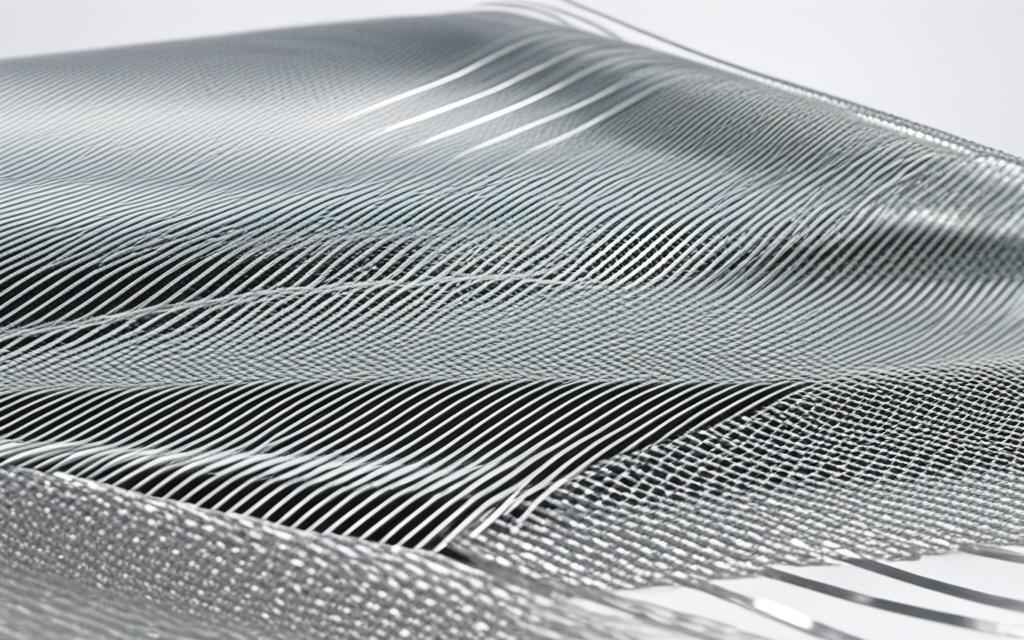
Braided shielding and foil shielding are both effective methods of protecting coaxial cables from electromagnetic interference. The choice between the two depends on the specific requirements of the application, such as flexibility, ease of termination, and weight considerations. Understanding the shielding options allows for informed decisions when designing and selecting coaxial cables for different applications.
Impedance and Coaxial Cable Design
Impedance is a critical factor in ensuring efficient signal transmission in coaxial cables. It is influenced by the physical dimensions of the cable and the dielectric constant of the insulating material. By matching the impedance of the cable to the impedance of connected devices, we can minimize signal reflections and maximize power transfer.
Impedance mismatches can have detrimental effects on signal transmission. They can lead to signal degradation, standing waves, and signal loss. It is crucial to design coaxial cables with impedance mismatches in mind to avoid these issues.
For telecommunications applications, coaxial cables are typically designed with a 50-ohm impedance. This impedance provides optimal performance and compatibility with various communication systems.
Cable length has minimal impact on impedance when the impedance is near 50 ohms. However, when there are impedance mismatches, it can result in performance degradation and signal integrity issues. Careful attention should be given to impedance matching in order to avoid these problems.
Benefits of Impedance Matching:
- Minimizes signal reflections
- Maximizes power transfer
- Ensures optimal signal transmission
- Avoids signal degradation, standing waves, and signal loss
Summary:
Designing coaxial cables with the appropriate impedance is crucial for ensuring efficient signal transmission. Impedance mismatches can lead to signal degradation and other issues that affect signal integrity. By carefully considering impedance matching, we can optimize the performance of coaxial cables and maintain reliable signal transmission.
| Impedance | Signal Reflections | Power Transfer | Signal Quality |
|---|---|---|---|
| Matched | Minimized | Maximized | Optimal |
| Mismatched | Increased | Decreased | Degraded |
Attenuation, Insertion Loss, and Frequency Range in Coaxial Cables
When it comes to coaxial cables, understanding attenuation, insertion loss, and frequency range is critical for optimizing signal transmission. These factors directly impact the quality, range, and reliability of the signals being transmitted.
Attenuation refers to the reduction in signal strength as it travels through the cable. It is influenced by various factors such as resistance, dielectric losses, and electromagnetic interference. As the signal travels, it can encounter resistance within the cable, causing a gradual reduction in signal strength. Dielectric losses occur when the insulating material between the conductors absorbs a portion of the signal’s energy. Additionally, electromagnetic interference from external sources can further deteriorate the signal’s strength. Effective cable shielding is crucial to minimize attenuation and maintain signal integrity.
Insertion loss happens when a component, such as a connector or amplifier, is inserted into the signal path. This insertion introduces additional power loss, which can impact the overall signal strength and quality. It is vital to choose high-quality components and ensure proper installation to minimize insertion loss and maintain optimal signal transmission.
The frequency range of a coaxial cable determines the range of frequencies it can effectively transmit. Different applications require different frequency ranges to accommodate the specific signals being transmitted. It is essential to select a cable with an appropriate frequency range to ensure reliable and efficient signal transmission. Using a cable with a wider frequency range than necessary can lead to unnecessary costs, while selecting a cable with a narrower frequency range can result in signal degradation or loss.
“Understanding attenuation, insertion loss, and frequency range is crucial for optimizing signal transmission in coaxial cables.”
For a better understanding, the following table provides a comparison of attenuation, insertion loss, and frequency ranges for different types of coaxial cables:
| Cable Type | Attenuation | Insertion Loss | Frequency Range |
|---|---|---|---|
| RG-6 | 10.7 dB/100 ft at 1000 MHz | 0.4 dB at 1000 MHz | 0-1000 MHz |
| RG-58 | 15 dB/100 ft at 1000 MHz | 0.2 dB at 1000 MHz | 0-1000 MHz |
| RG-11 | 6.6 dB/100 ft at 1000 MHz | 0.3 dB at 1000 MHz | 0-1000 MHz |
The table above highlights the differences in attenuation, insertion loss, and frequency ranges between popular coaxial cable types. It is important to consider these factors when selecting the appropriate cable for a specific application.
By understanding attenuation, insertion loss, and frequency range in coaxial cables, engineers and technicians can make informed decisions to ensure optimal signal transmission, minimize signal degradation, and maintain reliable communication systems.
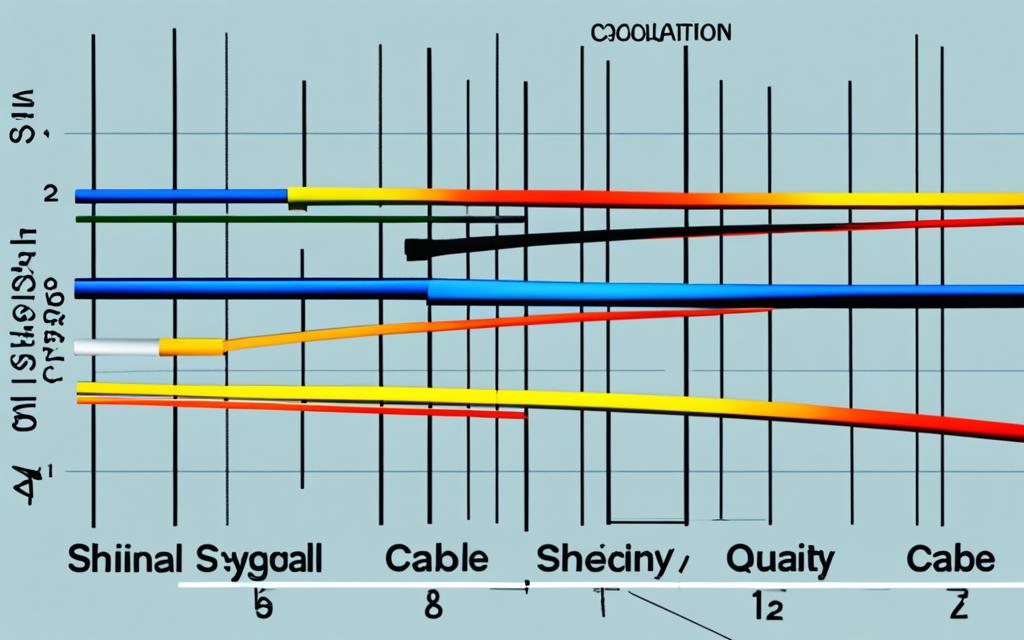
Conclusion
In conclusion, the shielding of coaxial cables plays a critical role in maintaining signal integrity and protecting against interference. It is essential to carefully select the appropriate type of shielding based on the specific needs of the application and the environmental factors at play. By considering factors such as impedance matching, attenuation, insertion loss, and frequency range, optimal signal transmission can be achieved.
Furthermore, proper grounding of coaxial cables is vital to ensure safety, protect equipment, and reduce interference. Grounding allows for the dissipation of unwanted electrical currents and helps maintain a stable reference point for the cable’s operation. Effective grounding safeguards against potential damage, improves signal quality, and contributes to the overall performance of the system.
By understanding the importance of coaxial cable shielding and implementing effective techniques, industries and applications relying on reliable and high-quality signal transmission can benefit greatly. Whether it’s in telecommunications, broadcasting, or data communications, the proper selection and installation of shielded coaxial cables can mitigate the risks of electromagnetic interference and ensure the smooth operation of communication systems.
FAQ
What is the role of shielding in coaxial cables?
Shielding plays a vital role in ensuring signal integrity and performance in coaxial cables. It helps combat electromagnetic interference (EMI) that can disrupt the operation of equipment and degrade signal quality.
What are the types of shielding used in coaxial cables?
Coaxial cables use two main types of shielding: braided and foil. Braided shielding consists of a woven mesh of wire strands, while foil shielding is a thin layer of metallic foil wrapped around the inner conductor.
What factors affect the effectiveness of shielding in coaxial cables?
The effectiveness of shielding in coaxial cables depends on factors such as the type and thickness of the shield, frequency range, and quality of connectors and terminations.
How does impedance affect signal transmission in coaxial cables?
Impedance plays a crucial role in ensuring efficient signal transmission in coaxial cables. Matching the impedance of the cable to the impedance of connected devices minimizes signal reflections and maximizes power transfer.
What is attenuation and how does it affect signal quality in coaxial cables?
Attenuation refers to the reduction in signal strength as the signal travels through the cable. It can affect signal quality, range, and reliability. Additionally, insertion loss occurs when a component is inserted into the signal path and results in signal power loss.
What should be considered when choosing a coaxial cable for a specific application?
When choosing a coaxial cable, factors such as the frequency range, shielding requirements, impedance matching, and attenuation must be considered to ensure optimal performance.
How does proper grounding of coaxial cables contribute to signal transmission?
Proper grounding of coaxial cables ensures safety, protects equipment, and reduces interference. Grounding helps prevent the coupling of unwanted external electromagnetic fields with the cable’s signal, maintaining the integrity of transmitted data.

